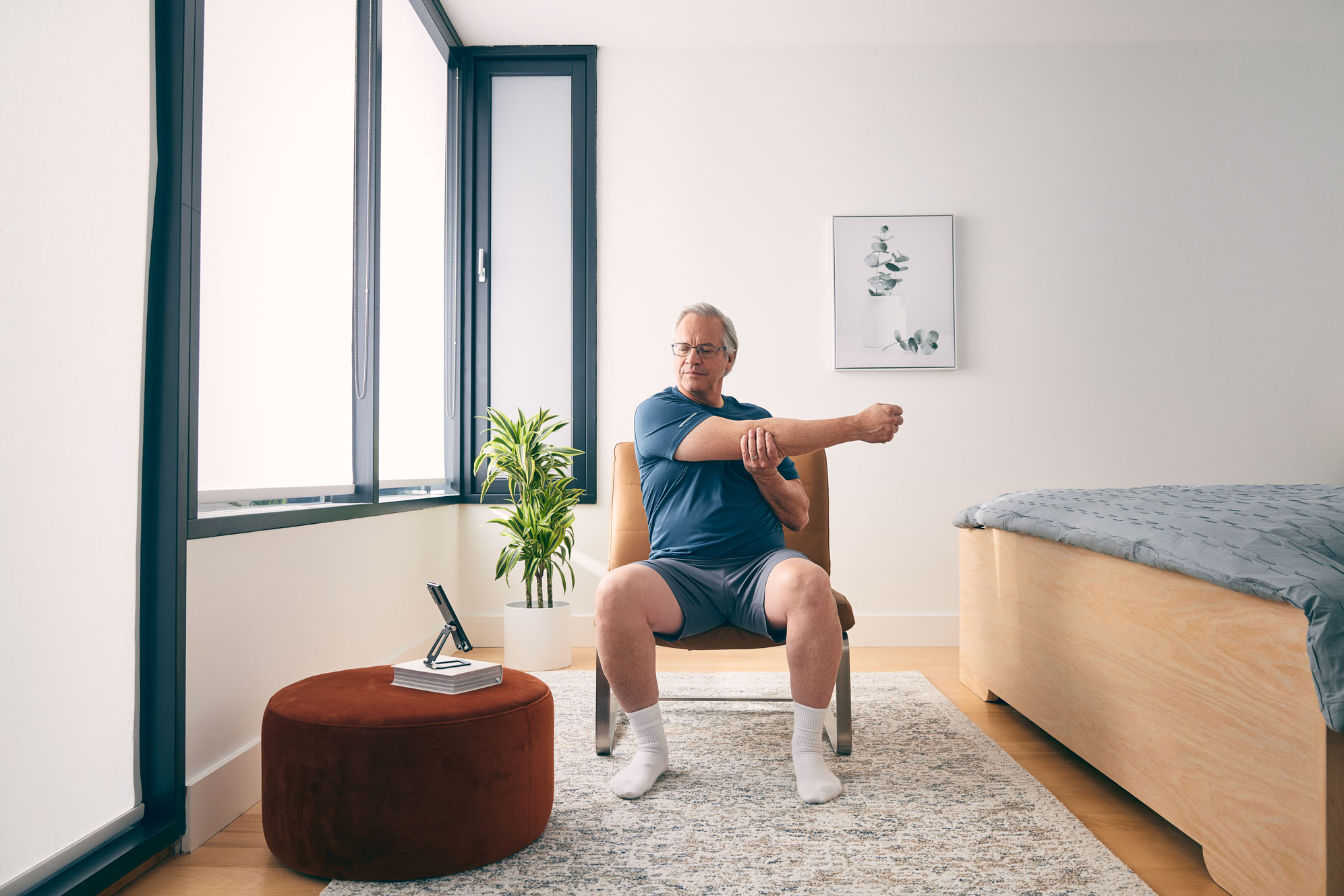Cómo estirar todo el cuerpo: una sencilla rutina de estiramientos de cuerpo completo de fisioterapeuta
Aprende por qué son importantes los estiramientos y descubre los beneficios de una rutina de estiramientos de todo el cuerpo. Explora los mejores estiramientos para prevenir y controlar el dolor articular.
$0 costo para usted
Última actualización: Jul 22, 2025
El índice
- La cabeza gira con la mano
- Estiramiento de brazos cruzados
- Estiramiento de rotación de la espalda
- Estiramiento de cuádriceps
- Deslizamiento del nervio medio derecho
- Deslizamientos nerviosos del tren inferior
- Movilización del tobillo izquierdo
